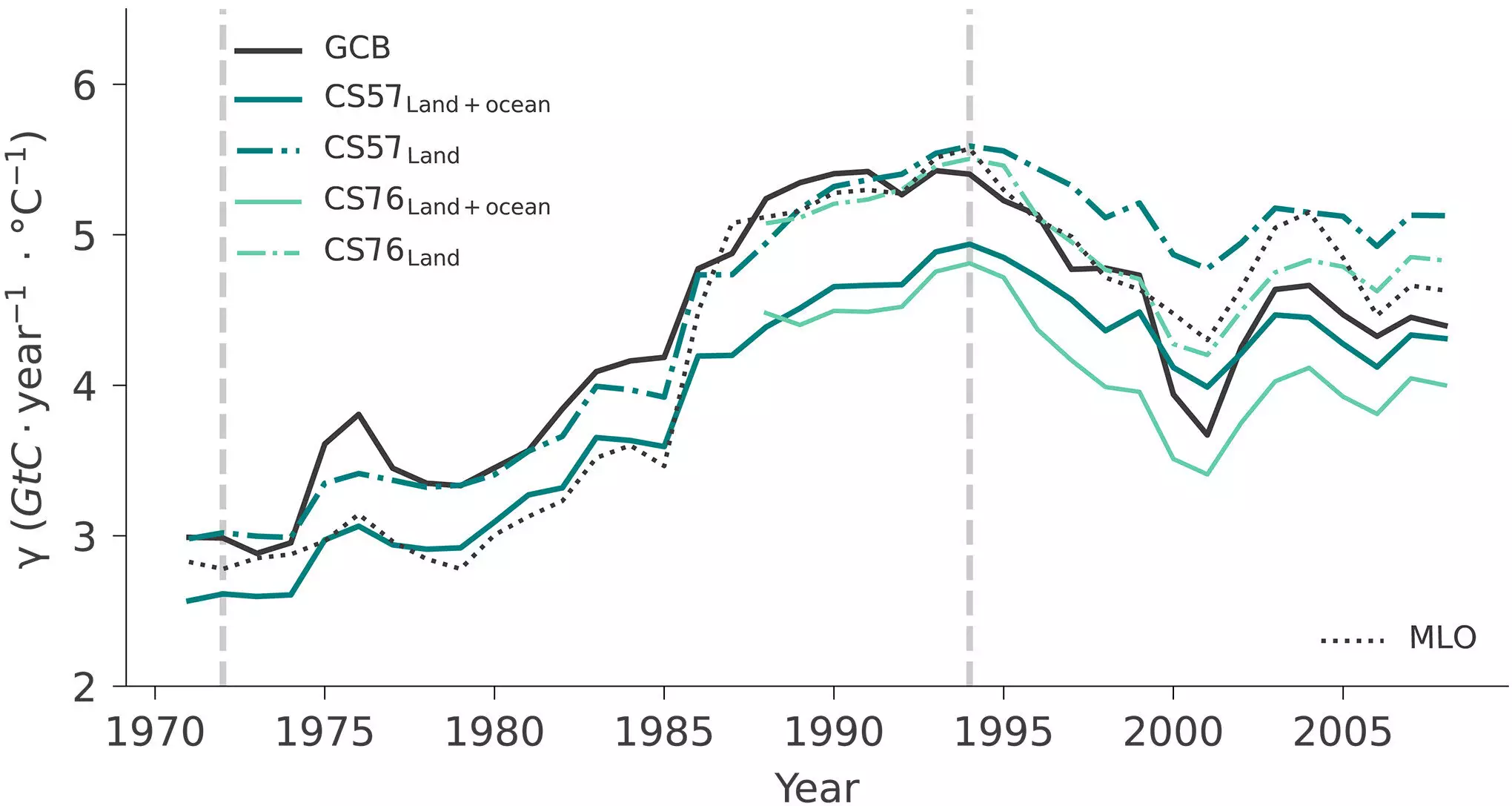Recent scientific inquiries into the relationship between atmospheric carbon dioxide (CO₂) levels and tropical temperatures have led to a thought-provoking reexamination of established beliefs. Traditionally, it has been assumed that the connection between increasing CO₂ and rising temperatures in tropical regions was uniformly linked to ongoing climate change, notably through drought patterns and alterations in carbon cycle responses. However, groundbreaking research from the Max Planck Institute for Biogeochemistry and Leipzig University casts a new light on this topic, suggesting instead that extreme El Niño events may be the primary catalyst for recent observations.
From 1959 to 2011, it was identified that atmospheric CO₂ levels exhibited a new sensitivity to temperature fluctuations in the tropics, manifesting twice as strongly as previously noted. Researchers now propose that this increased responsiveness is predominantly a consequence of heightened El Niño occurrences since the 1980s, particularly the notable episodes of 1982/83 and 1997/98. These climatic anomalies are characterized by significant oceanic and atmospheric changes, often leading to intense droughts and heat waves across tropical ecosystems. The implications of this study are profound, indicating that while we have been fixated on the overarching narrative of climate change, we must also reckon with the rapid and often disruptive impact of localized climatic events.
The ramifications of El Niño extend beyond immediate temperature changes; they disrupt crucial ecosystems that play a significant role in carbon absorption. Tropical and non-tropical environments together sequester approximately a third of anthropogenic CO₂ emissions, acting as essential buffers against climate change. However, during periods of extreme El Niño, vegetation is not only hampered in its growth due to drought conditions, but it also tends to release previously stored carbon back into the atmosphere. This cyclical displacement of carbon directly leads to elevated CO₂ levels, exacerbating the greenhouse effect.
The research highlights that the phenomenon is characterized by a “slow-in, fast-out” dynamic within the carbon cycle. Ecosystems gradually absorb carbon over time, but can release it swiftly following extreme climatic events like El Niño. This pivotal finding suggests that heightened sensitivity to increases in CO₂ could be misinterpreted as a fundamental change within the carbon cycle, when in reality, it may reflect a temporary fluctuation prompted by sporadic climatic disruptions.
One of the critical aspects of the study is its emphasis on the concept of internal climate variability. Researchers from both institutions argue that the increase in atmospheric CO₂ during periods of extreme weather is not necessarily indicative of long-term, systematic changes in the climate or carbon cycle, but rather reflects short-term fluctuations driven by intense climatic occurrences. This underscores the need to disentangle long-term trends from transitory phenomena, a task that is crucial as global climate models are developed and refined.
The recognition that El Niño instigates significant short-term variability in carbon dynamics opens new avenues for climate modeling. It presents an opportunity to enhance the precision of predictions regarding future CO₂ concentrations and the corresponding climate changes. As Dr. Sebastian Sippel articulates, a refined understanding of how these extreme climatic events alter carbon dynamics will lead to more reliable climate forecasts, enhancing our preparedness for the future.
The relationship between CO₂ in the atmosphere and tropical temperatures is substantially more complex than initially perceived. This study reveals that extreme El Niño events should not be overlooked in discussions surrounding climate change, as they can significantly influence carbon dynamics. As we strive to build more accurate climate models, it is imperative that we incorporate the nuances of climate variability and the potential short-term impacts of such extreme events. The ongoing research in this area establishes a crucial understanding that not all fluctuations in atmospheric CO₂ are harbingers of permanent change; some are the results of discrete climate anomalies that require careful consideration in climate science discourse.


Leave a Reply